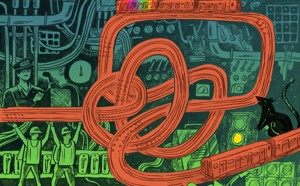Later on today, the Riders Alliance, along with the Global Gateway Alliance and other NYC advocacy groups, will issue a report and hold a press conference calling upon the MTA to eliminate the fare on the Q70 bus. Their proposal would streamline and clarify access to LaGuardia Airport while increasing the number of airport travelers using a transit connection. The group contends the idea could be implemented immediately and would likely improve the MTA’s bottom line. It’s an intriguing idea and one completely foreign to New York City.
Due to an embargo on the report, I can’t say much more now about the initiative, but I have a full post ready to go when the embargo is lifted at noon today. Be sure to check back then for the details and fine print regarding this plan. Needless to say, it’s one that deserves full consideration (if not a fast implementation). Can the MTA embrace an idea that so outside the box for the agency? We’ll find out soon.













 Following up on
Following up on  Despite journalistic claims of objectivity, some of the best reporting happens when a writer pursues something personal. In this instance, James Somers wanted to know why his F train stop at Carroll St. didn’t have countdown clocks, and what he undercovered made for a
Despite journalistic claims of objectivity, some of the best reporting happens when a writer pursues something personal. In this instance, James Somers wanted to know why his F train stop at Carroll St. didn’t have countdown clocks, and what he undercovered made for a 



 Rockaway Park Shuttle
Rockaway Park Shuttle